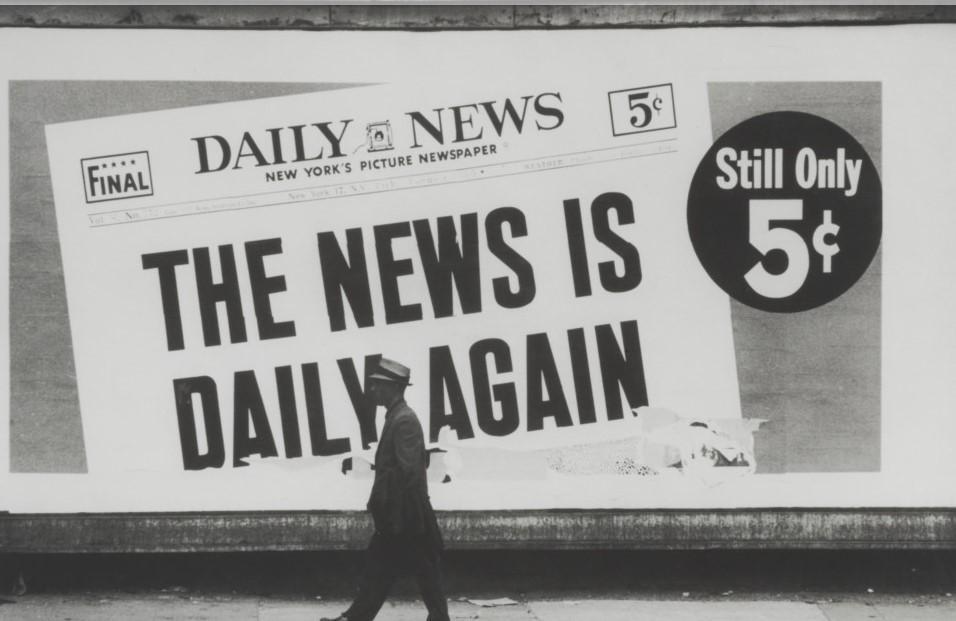
Pera Museum presents a new exhibition, “And Now The Good News,” bringing together a comprehensive selection of works from the Annette and Peter Nobel Collection.
The exhibition focuses on the dialogue between art and the mass media, taking the invention of the printing press in the late 18th century and the formation of periodic journalism in the 19th century as a starting point.
Curated by Christoph Doswald, the exhibition discusses the most critical issues in science, culture and politics in the last 150 years, as well as reveals important changes that occurred over the last 20 years and their impact on the press art.
Taking the newspaper as an intellectual starting point, “And Now the Good News” focuses on the relationship between text and news, how the invention of photography shaped society and the powerful effect totalitarian systems have on mass media.
The exhibition highlights turning points such as the peace movement following World War II, the relationship between media industries and consumer culture, and the critical media discourse that emerged in arts in the wake of globalization. It also depicts the transformation of concepts such as gender, religion and ethnicity in arts and media, as well as the development of social media society.
Around 300 works by 164 artists
“And Now The Good News: Works from The Nobel Collection” features around 300 works by 164 artists who have used a variety of media, including painting, photography, collage, drawing, installation and video, such as Alberto Giacometti, Aleksandr Rodchenko, Andy Warhol, Andreas Gursky, Jenny Holzer, Bedri Baykam, Barbara Kruger, Christo, David Hockney, Dennis Hopper, Elmgreen & Dragset, Fernand Légér, Georges Braque, Henri Cartier-Bresson, Joseph Beuys, Özlem Günyol & Mustafa Kunt, Le Corbusier, Malevich, Man Ray, and Mayakovski.
Annette and Peter Nobel, who have brought together the works that allow a viewer to track the most significant periods of modern and contemporary art, say: “Firstly, technical fascination, then the intellectual scope and finally the change played a role in our decision to collect press art. It is astonishing how many artists have temporarily, incidentally, or repeatedly used newspapers as a basis for their works, even painted from newspapers or even designed them themselves. This is a conscious act and can be seen as a call to deal aesthetically with everyday phenomena. Art becomes a symbolic living world.”
Describing the “And Now the Good News” exhibition as an illustration of this stimulation, Doswald says: “Under the genre term ‘Press Art,’ artistic products are gathered that are related to the printed word and the printed image in the broadest sense, that elevate the cheap, daily renewable consumer good to an expensive individual item: Collages made from newsprint; paintings whose model was provided by a press image; photographs showing a magazine cover; gouaches applied to newsprint; and silkscreens based on a star photograph from a celebrity magazine. The paintings, collages, assemblages, drawings and prints in the collection of Annette and Peter Nobel tell of a time when the relationship between the direct original and the media image still existed.”
Pointing out that this relationship, once irrevocable, has never been so much in question, Doswald says: “This discourse about original and fake is no longer just an aesthetic marginal phenomenon but of public interest. The separation of information procurement, media mediation and commercial exploitation is under great pressure. More than ever, not only the credibility of the media but also the much-cited autonomy of art is being put to the test.”
The curatorial framework of the exhibition is based on the articles “Violence of Images, Violence Against Images” by Jean Baudrillard, “More Light! Reading Pictures” by Dorothea Strauss and “Ten Thesis On Artistic Freedom and the Promotion of Art” by Felix Uhlmann and Cristina Bognuda.
“And Now the Good News: Works from the Nobel Collection” will be on view until Aug. 7.